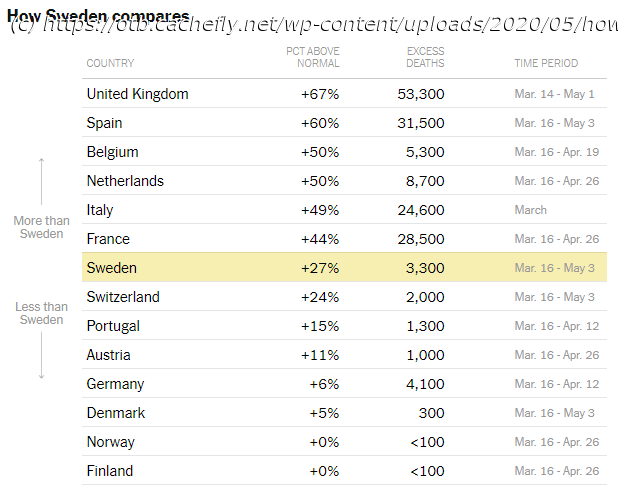Vastly more people died than needed to and the economy still crashed.
While some were faster to do it than others, just about every advanced country on the planet ordered massive business shutdowns and some form of sheltering-in-place to stem the tide of the novel coronavirus. A major exception was Sweden, which took a much “softer” approach for a variety of cultural reasons.
At first, it looked as though this approach may have been prudent. The death rate was lower than in many other European countries and the social and economic impact looked smaller. Many American conservatives touted the Swedish model as one we should be following here.
It turns out, though, that the early perceptions were fueled by wishful thinking. A New York Times report from over the weekend by Lauren Leatherby and Allison McCann points out that,
[W]hile Sweden has avoided the devastating tolls of outbreaks in Italy, Spain and Britain, it also has seen an extraordinary increase in deaths, mortality data show.
In Stockholm, where the virus spread through migrant communities, more than twice the usual number of people died last month. That increase far surpasses the rise in deaths in American cities like Boston and Chicago, and approaches the increase seen in Paris.
Across Sweden, almost 30 percent more people died during the epidemic than is normal during this time of year, an increase similar to that of the United States and far higher than the small increases seen in its neighboring countries. While Sweden is the largest country in Scandinavia, all have strong public health care systems and low health inequality across the population.
“It’s not a very flattering comparison for Sweden, which has such a great public health system,” said Andrew Noymer, a demographer at the University of California at Irvine. “There’s no reason Sweden should be doing worse than Norway, Denmark and Finland.”
The graphic representation is rather stark:
Sweden had 27% more excess deaths year-over-year. The other Nordic countries, the best apples-to-apples comparison, had essentially none.
Still, one could argue that the results aren’t catastrophic.
Two months later, it has not been the worst-case scenario many envisioned. Covid-19 deaths have disproportionately hit the elderly and those in nursing homes, as is the case in most countries, but hospitals have not been overwhelmed. As with the rest of the world, it will be months, or even years, before the full picture of mortality emerges.
“It is clear that mortality in Stockholm has been a lot higher than you would expect from a normal year,” said Martin Kolk, a demographer at Stockholm University. “But we will have to wait and see what happens. It’s a very big difference if we continue to see excess mortality for six more months, or if it will be back to normal levels in a few weeks.”
And officials there make a point that I’ve started harping on of late: the nature of inertia:
“Once you get into a lockdown, it’s difficult to get out of it,” Sweden’s state epidemiologist, Anders Tegnell, said.






